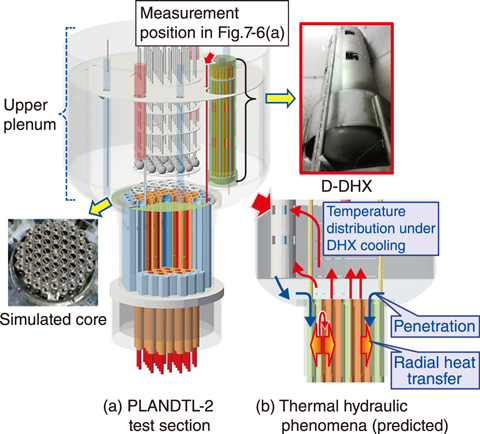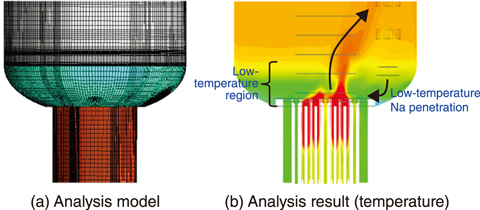
Fig.7-5 Schematic and imaging of the test section of PLANDTL-2 and target phenomena in natural circulation decay heat removal with D-DHX

Fig.7-6 Example temperature distribution in PLANDTL-2

Fig.7-7 Example numerical simulation of PLANDTL-2
Decay heat removal systems (DHRSs) that take advantage of thermal properties of liquid sodium (Na) have been studied to enhance the safety of SFRs. A DHRS using a heat exchanger dipped in the upper plenum of the reactor vessel (i.e., a dipped-type direct heat exchanger, D-DHX), shown in Fig.7-5(a) is a prime candidate. This system can work in case of the loss of external power supply to the plant, because high-temperature Na from the core is cooled through the D-DHX returns to the core by natural convection. During the operation of the D-DHX, the low-temperature Na from the D-DHX penetrates the fuel assembly (FA) and the gap between FAs. To clarify the core coolability using the D-DHX, it is important to investigate the thermal interaction between the low-temperature Na and the high-temperature Na. From this perspective, a series of Na experiments using Na experimental apparatus PLANDTL-2 were performed under D-DHX operation to clarify the core coolability and to validate numerical analysis methods.
An overview of the test section of PLANDTL-2 is shown in Fig.7-5; here, major components of SFRs, such as an upper plenum, a simulated core, and a D-DHX were installed at approximately a 1/5th scale. The core was modeled by hexagonal wrapper tube channels consisting of 30 electric heating channels and 25 non-heating channels. More than 550 points of thermocouples were installed inside the test section to obtain a detailed temperature profile across the reactor vessel; a resulting representative measured temperature distribution is shown in Fig.7-6. Here, a low-temperature region was formed in the bottom of the upper plenum by the Na from the D-DHX (Fig.7-6(a)). The low-temperature Na penetrated the inside of the channels and the gaps between them from the outer region of the core (Fig.7-6(b)). The results indicate that the core was stably cooled by the D-DHX operation and the safety-enhanced SFR was feasible.
Measured data in PLANDTL-2 were also used to validate the evaluation method based on numerical analyses using computational fluid dynamics (CFD). As shown in Fig.7-7, it is expected that prediction of thermal hydraulic phenomena inside the reactor vessel becomes possible through the validation using the data obtained in PLANDTL-2. This will allow for the replacement of large-scale SFR tests with numerical analyses, thus reducing the development costs in future.
This study is part of the results conducted on “Technology development program of fast breeder reactor international cooperation, and others”, supported by the Agency of Natural Resources and Energy (ANRE), the Ministry of Economy, Trade and Industry (METI), Japan.
(Toshiki Ezure)